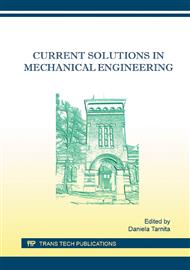p.479
p.485
p.489
p.495
p.501
p.507
p.513
p.519
p.525
Optimization of Cutting Conditions in Multi-Pass Milling
Abstract:
In this paper, a new, optimization strategy is used for the determination of the optimum cutting parameters for multipass milling operations. This strategy is based on the “minimum production time” criterion. The optimum number of passes is determined via dynamic programming, and the optimal values of the cutting conditions are found based on the objective function developed for the typified criterion by using a hybrid genetic algorithm with SQP. GA is the main optimizer of this algorithm, whereas SQP is used to fine-tune the results obtained from the GA. Furthermore, the convergence characteristics and robustness of the proposed method have been explored through comparisons with results reported in literature. The obtained results indicate that the proposed strategy is effective compared to other techniques carried out by different researchers.
Info:
Periodical:
Pages:
525-530
Citation:
Online since:
January 2016
Authors:
Price:
Сopyright:
© 2016 Trans Tech Publications Ltd. All Rights Reserved
Share:
Citation:


